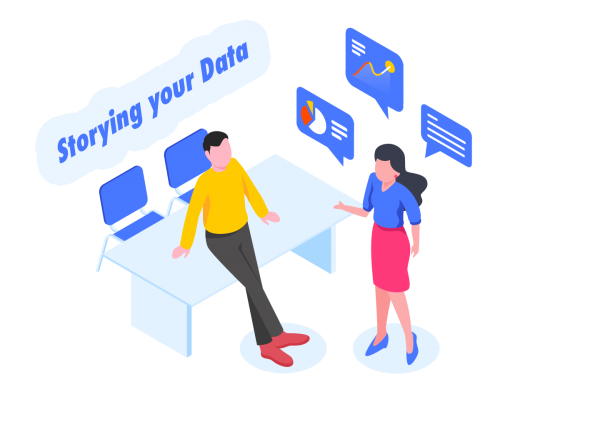Organizations in virtually every sector have access to data that can offer an advantage for developing new products, helping coworkers reach their potential, and improving customer experience. Companies on average manage three times more data than they did five years ago. Many organizational leaders devote valuable time diving into these pools of data searching for patterns, problems, or potential opportunities. This analytical work can be energizing when it reveals nuggets of information to gain a competitive edge. But leaders who know how to communicate their relevant data through a story structure have better odds of convincing others to take action.
Powerful stories have a similar structure.
Whether it’s a personal story told to a friend, a Hollywood blockbuster, or a fable from classical literature, most effective stories have a common three-part structure.
Part 1 presented the plot.
The main character (the hero of the story) is introduced. This is where the hero’s context and circumstances are made evident. Through the story structure your organizational problem or opportunity that is identified in your data is revealed. For example, the average rate that customers who return to purchase additional clothing on our website is 42 percent.
Part 2 presents the problem or opportunity in more detail.
For example, men who return to our website to purchase additional clothing is 22 percent. Your data reveals products, systems, or procedures that calls for the organization to pivot, carry-on, or complete:
- Pivot – transform who we are or what we are doing.
- Carry-on – endure, maintain, or prolong a course of action.
- Complete – finish a project, or stop doing something.
This part of the story describes the messy circumstances that the main character faces in pursuing the problem or opportunity. Often an antagonist is introduced into the story structure, so the hero has to defeat the nemesis in order to resolve the central conflict. Here the story reveals the benefits and risks the main character faces in order to accomplish the desired action.
Part 3 presents the resolution.
The hero has to acquire new skills or garner additional resources that transform the hero to overcome the conflict, defeat the antagonist, and accomplish the desired action. The story reveals how to solve the messy situation and create a positive outcome in the future. The actions taken will alter the future data.
A great story communicates a game-changing message, so crafting a story cannot be haphazard, but is developed to appeal to the listeners’ sense of logic. The use of active verbs (rather than adjectives) is desirable to describe your recommendations. Assuming those on the receiving end of your communication – be they customers or coworkers – are the ones affected by the actions taken, then your story must persuade them why the action is necessary. Your story should also acknowledge assumptions or potential variables that could affect the future results.
Leaders rely on data to help us define reality, and stories help us make the data meaningful to others. Stories told well can be impactful. And skillfully telling them comes with practice.

Leave a Reply